#bureau of land management
Text
The Brooks Range is essential for the Alaska Native peoples who live, hunt, and fish in Northwest Alaska. It's home to the world's only remaining populations of migrating caribou, and dozens of migratory and boreal bird species, from Blackpoll Warblers to Arctic Loons.
The Ambler Road proposal puts the Brooks Range and everything within it at risk. If built, this will not be a simple road, but a 211-mile industrial corridor that would threaten North America's largest protected and roadless region, as well as the food security and clean water of Alaska Native Tribes. It will cut through 1,200 river crossings, thousands of acres of wetlands, and migration pathways.
Sign now
#ecology#enviromentalism#alaska#Brooks Range#caribou#bird conservation#biodiversity#Ambler Road Proposal#bureau of land management#indigenous rights#alaska native
55 notes
·
View notes
Text
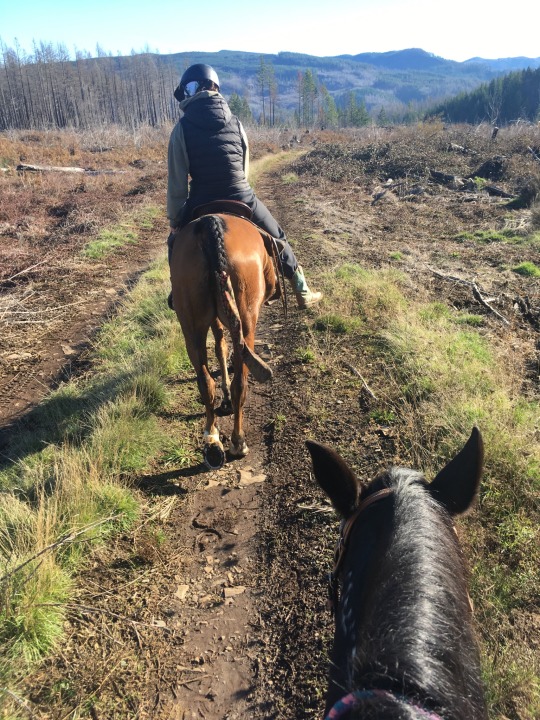
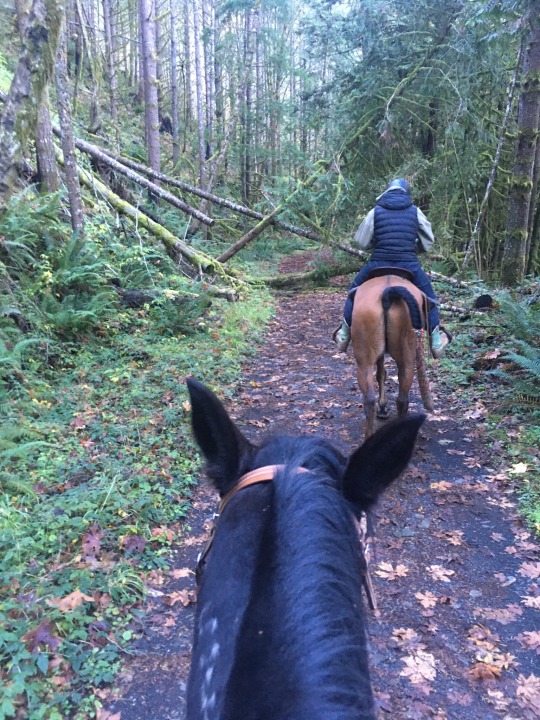
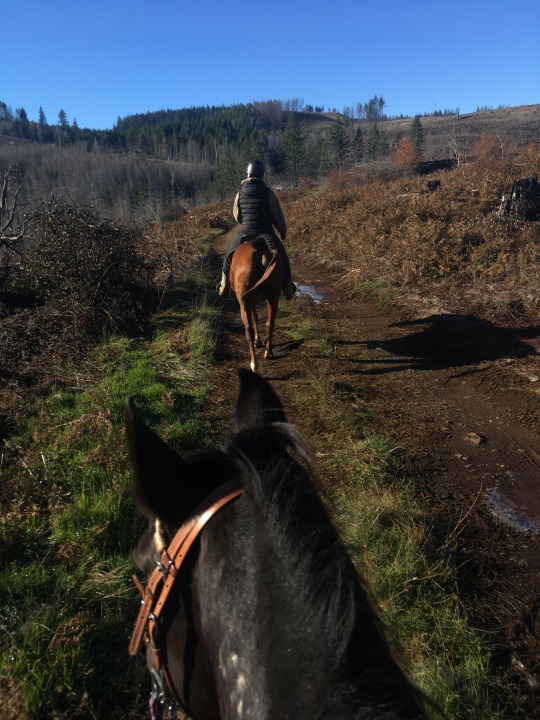
This weekend I got to take Thea out riding in a BLM timber preserve - almost nine miles with lots of uphill gallops, several log jumps, and one slide on her butt down a very steep muddy hill. She worked hard enough to sweat on her face, and loved every second of it. She kept pace with the Arab better this time
#blm mustang#mustang horse#horse#thea#equestrian#horseblr#bureau of land management#timber#number 105 was a ride in the corridor! almost nine miles
31 notes
·
View notes
Text

Bureau of Land Management weighs in
#Twitter#Elon Musk fiasco#satire#Bureau of Land Management#BLM#how are all the PNW government accounts so fucking funny
153 notes
·
View notes
Text
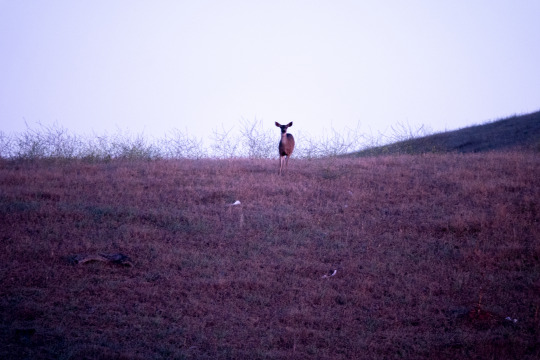
The Nameless Trails
Tripods stand by tourists fanned across the valley floor,
A thousand shots in color, lots of orange and grey, and more.
(That is, unless, the sky won’t bless them with a cloudless day,)
The crowds look up and try their luck, for fire falls they pray.
Yosemite is fine to me, I’ll trek to Yellowstone,
Each park is grand, these wondrous lands are deservedly well-known.
Though swarmed by hoards of travelers, bored, we wait in miles of cars,
I’m glad I know the golden glow of sunsets lighting parks.
But have you seen the silver gleam of pools reflected light,
Dancing on a doe and fawn who never know your sight?
Among the stones and fields unknown, a fluttering of quails,
Have you heard the calling birds that sing on nameless trails?
Have you run in rising sun and held the rocks unturned?
This land is mine, and yours, from rhine to blackened forests burned.
The vast expanse and bold romance of the wild and free west
Out there awaits, beyond cow gates, with miles are we blessed.
Without a name or worldwide fame, alone I can meander.
No signs, no shops, vacant hilltops, a private, hidden grandeur.
Go and see the copse of trees, the unadvertised cattails,
Near you and know, the golden glow of sun on nameless trails.
#Poetry#My poetry#public lands#Bureau of Land Management#National Forest Service#Firefalls#Yosemite#Yellowstone#just go outside#National Parks are lovely but they're not the only#or best#places
42 notes
·
View notes
Text
Excerpt from this story from E&E News/Politico:
The Bureau of Land Management announced Thursday it has finalized a sweeping new public lands rule that places conservation and restoration of public lands on equal footing with energy development and mining.
The final rule implements a suite of conservation policy tools and initiatives BLM offices are directed to employ in an effort to protect natural spaces and restore lands in the face of a warming climate.
The rule states that urgent action is needed to preserve and restore federal rangelands against drought and increased wildfires, or the 245 million acres BLM oversees will no longer be able in the coming decades to support grazing, recreation or energy development.
“The rule does not prioritize conservation above other multiple uses. It also does not preclude other uses where conservation use is occurring,” according to the final rule. “Many uses are compatible with different types of conservation use, such as sustainable recreation, grazing, and habitat management. The rule also does not enable conservation use to occur in places where an existing, authorized, and incompatible use is occurring.”
Critics, including the National Mining Association, blasted the final rule as an effort to block energy production and mining, and a betrayal of BLM’s mandate to accommodate a range of uses beyond conservation.
But it’s a victory for conservation groups and other supporters who see it as a major and long-overdue policy shift for an agency they say has too often favored ranching, oil and gas drilling or mining over the preservation and health of federal rangelands.
The rule will formally take effect 30 days after it is published in the Federal Register, presumably in the coming days.
The final BLM rule is among a handful of major policy changes, rules and initiatives rolled out within the past week as President Joe Biden looks to bolster his appeal to conservationists and young climate activists during an election year.
Summary of the Public Lands Rule from a press release from the Department of the Interior:
The final rule:
Directs BLM to manage for landscape health. Successful public land management that delivers natural resources, wildlife habitat and clean water requires a thorough understanding of the health and condition of the landscape, especially as conditions shift on the ground due to climate change. To help sustain the health of our lands and waters, the rule directs the BLM to manage public land uses in accordance with the fundamentals of land health, which will help watersheds support soils, plants, and water; ecosystems provide healthy populations and communities of plants and animals; and wildlife habitats on public lands protect threatened and endangered species consistent with the multiple use and sustained yield framework.
Provides a mechanism for restoring and protecting our public lands through restoration and mitigation leases. Restoration leases provide greater clarity for the BLM to work with appropriate partners to restore degraded lands. Mitigation leases will provide a clear and consistent mechanism for developers to offset their impacts by investing in land health elsewhere on public lands, like they currently can on state and private lands. The final rule clarifies who can obtain a restoration or mitigation lease, limiting potential lessees to qualified individuals, businesses, non-governmental organizations, Tribal governments, conservation districts, or state fish and wildlife agencies. Restoration and mitigation leases will not be issued if they would conflict with existing authorized uses.
Clarifies the designation and management of ACECs. The final rule provides greater detail about how the BLM will continue to follow the direction in the Federal Land Policy and Management Act to prioritize the designation and protection of ACECs. Following public comments, the final rule clarifies how BLM consideration of new ACEC nominations and temporary management options does not interfere with the BLM’s discretion to continue advancing pending project applications.
8 notes
·
View notes
Text
…protections for horses are enshrined in federal law. The 1971 Wild Free-Roaming Horses and Burros Act mandated that the animals “are to be considered … as an integral part of the natural system of the public lands,” and as such, they “shall be protected from capture, branding, harassment, or death.”
Under Trump in 2018, the Department of the Interior adopted a bold new program for the management of horses that exploited loopholes in the 1971 law. The program, Path Forward, was the brainchild of Republican Rep. Chris Stewart of Utah, a longtime friend of public land livestock grazers who consider horses to be their cows’ competitors on western rangelands.
Path Forward was a wholesale gift to the livestock industry. It directed the Interior Department’s Bureau of Land Management, or BLM, to expand roundups on federal herd management areas where the animals were alleged to have overpopulated. The benefit to livestock interests was obvious: Cows also use these same management areas, and the fewer horses in them, the better for stock-growers dependent on public forage to fatten their herds.
With Path Forward, the BLM began holding horses in “off-range” facilities in larger numbers than ever before, exposing the animals to rampant disease and extremes of cold and heat. It offered $1,000 a horse to would-be adopters, a much-ballyhooed “adoption incentive.” The agency promised that once the number of horses on the open range had been sufficiently reduced, it would begin widespread fertility control through darting of mares with contraceptives.
By 2020, Congress had fully funded Path Forward, and Secretary of the Interior Deb Haaland, whom Joe Biden celebrated as the first Native American to hold the post, did not hesitate to implement it. Haaland’s BLM has overseen the largest increase in roundups of wild horses on record. It should be remarked as one of the minor ironies of history that a woman whose appointment was supposed to represent a break from the past has ended up perpetuating a violent and cruel status quo.
Occasional horse roundups, conducted humanely, are not out of keeping with the Wild Free-Roaming Horses and Burros Act. The legislation stated that when the animals exceed the carrying capacity of management areas, the federal government should step in to regulate their numbers.
The problem is that the BLM has no scientific understanding of the carrying capacity of western rangelands where horses and burros roam free. This was the conclusion of a National Academy of Sciences report in 2013. The NAS investigators found that the BLM had failed to use “scientifically rigorous methods to estimate the population sizes of horses and burros,” failed “to model the effects of management actions on the animals,” and, pivotally, failed “to assess the … use of forage on rangelands.”
When I reported on wild horse controversies for my book on the fate of federal public lands under capitalism, I found that carrying capacity for these persecuted animals was mostly determined by the needs of cattle corporations. In every herd management area, there are cows, and they outnumber horses by orders of magnitude. Allotted the majority of the forage, the cattle do well, and the horses are left to survive on what pittance remains.
From the moment the 1971 legislation to protect horses and burros passed, the number of herd management areas, along with the total acreage included in them, has been continually declining. Horses today don’t enjoy full access to the meager acreage federal regulators designate for their survival. Livestock operators dominate even those parcels, while fences bar the horses from moving freely across the landscape. Maltreatment of horses is only one facet of a long historical process in which the BLM has treated wildlife with barely disguised contempt.
None of this appeared to be a consideration when, in 2022, the BLM decided to capture and place in holding facilities some 21,000 horses and burros, nearly twice the number of the last highest capture year, 2012. More horses and burros were rounded up and sent to holding between 2018 and 2022 — a total of 55,000 — than in any four-year period since passage of the 1971 act.
18 notes
·
View notes
Text
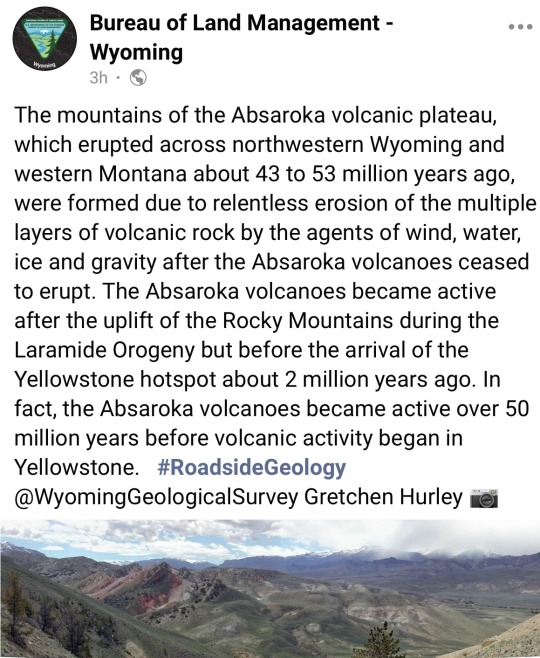
Our public lands
via BLM
60 notes
·
View notes
Text
President Biden signed into existence the 917,618 acre Baaj Nwaavjo I’tah Kukveni – Ancestral Footprints of the Grand Canyon National Monument. The new national monument covers three tracts of land important to indigenous people in Arizona.
Nearly 5 million people visit the Grand Canyon each year, but few are aware that the site has been sacred to Indigenous peoples in the region since time immemorial — and that the national park designation of the region essentially kicked them off their homelands a century ago.
On Tuesday, President Biden recognized this history by designating the nearly one million-acre region including the Grand Canyon and its surrounding areas as the Baaj Nwaavjo I'tah Kukveni – Ancestral Footprints of the Grand Canyon National Monument in Arizona. The announcement follows a 15-year endeavor from a coalition of tribes to protect the region from uranium mining that has polluted the Colorado River. Baaj Nwaavjo means "where tribes roam" for the Havasupai Tribe, while I'tah Kukveni translates to "our ancestral footprints" in Hopi.
[ ... ]
Former President Barack Obama previously banned new uranium mines in the Grand Canyon area in 2012, but his policy was set to expire later this year. This is the fifth new national monument established by the Biden administration to protect the country's natural landscapes, following the designation of the Avi Kwa Ame national monument in Nevada earlier in 2023.
Republicans, of course, don't like it.
The new designation permanently protects the region from uranium mining, which Republican leaders were quick to oppose, sending a letter to Biden claiming that the protections created for the Grand Canyon would cause the U.S. to over-rely on foreign countries like Russia for uranium. However, The Guardian reported that advocates say the region only contains some 1% of the country's uranium reserves and that uranium is best mined elsewhere.
Contrary to what Republicans and far right media may claim, acreage for the Baaj Nwaavjo I’tah Kukveni was already in federal hands and does not represent a grab of state, tribal, or private lands. Amber Reimondo at Grand Canyon Trust writes...
National monument designations only apply to federally managed lands. The Baaj Nwaavjo I'tah Kukveni – Ancestral Footprints of the Grand Canyon National Monument designation thus adds a layer of protection to lands already managed by the U.S. Forest Service and U.S. Bureau of Land Management. No private, state, or tribal lands are included in the monument.
This added layer of protection is incredibly popular with the public. The monument has broad support across the Grand Canyon state.
[ ... ]
Recent polling shows that 75 percent of Arizona voters support designating lands immediately outside Grand Canyon National Park as a national monument to protect clean water supplies and Native American sites.
The three components of the Baaj Nwaavjo I'tah Kukveni are outlined in green on this map.

#baaj nwaavjo i'tah kukveni – ancestral footprints of the grand canyon national monument#indigenous rights#native americans#arizona#joe biden#us forest service#bureau of land management#conservation#the environment#uranium mining#colorado river
6 notes
·
View notes
Text
#sierra club#bureau of land management#please sign and share#petition#petitions#please sign this petition#please share#please sign#climate action#climate science#climate activism#go green#fuck fossil fuels
6 notes
·
View notes
Text
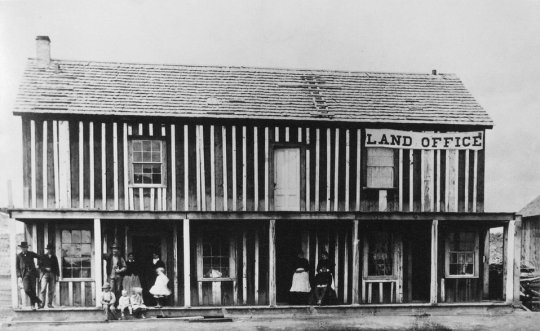
This work, identified by PublicDomainFiles.com, is free of known copyright restrictions.
Title: GLO Oregon, Harney District Land Office in Burns, Oregon. Authorized in June 1, 1889 and opened on September 2, 1889. Closed in 1924. Photo circa 1880
Creator: US Bureau of Land Management
#harney county#harneycounty#burns oregon#oregon#eastern oregon#the great pnw#the old west#oregonoutback#pnw#oregon outback#bureau of land management#the pacific northwest#the high desert
10 notes
·
View notes
Text
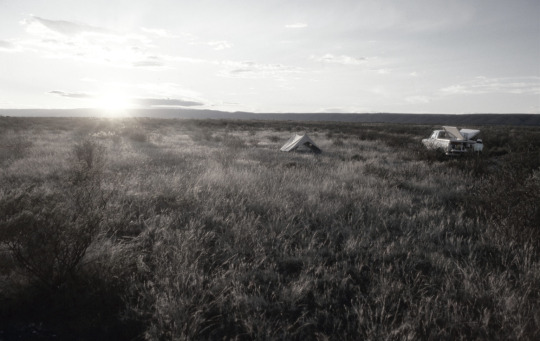
Sunrise on Bureau of Land Management grasslands
Nevada
1977
#vintage camping#campfire light#nevada#road trips#70s#bureau of land management#grasslands#history#travel
50 notes
·
View notes
Text
Federal data show the Biden administration approved 9,779 permits for oil and gas drilling on public lands in its first three years, nearly keeping pace with the Trump administration’s 9,982 drilling-permit approvals in its first three years.
The Biden administration’s policy of oil and gas expansion contradicts the clear climate science that fossil fuel growth must be stopped and governments must phase out fossil fuels to avoid the most catastrophic consequences of climate change. In December the United States and other countries agreed to a phasedown and ultimate phaseout of fossil fuel extraction.
“Given the urgency of the climate crisis and our nation’s pledge to phase out oil and gas extraction, the Biden administration needs to pump the brakes right now on issuing drilling permits on our public lands,” said Jeremy Nichols of the Center for Biological Diversity. “It’s time for the administration to show the world what true climate leadership looks like.”
The pace of new oil- and gas-drilling approvals stands in contrast to the administration’s action last week to temporarily pause new gas-export projects. While met with support, the pause is not permanent and does not stem new fossil fuel production.
“The temporary pause on new gas-exports projects is a good step, but for it to be meaningful, the Biden administration needs to make it permanent and stop rubberstamping more fossil fuel production,” said Nichols.
More than 6,000 of the drilling permits granted by the administration are on public lands managed by the U.S. Bureau of Land Management’s New Mexico office, followed by 1,793 permits in Wyoming and several hundred each in Utah, Colorado, California and North Dakota.
Scientific analyses show climate pollution from the world’s already producing fossil fuel developments, if fully developed, will push warming past 1.5 degrees Celsius. Avoiding such warming requires ending new investment in fossil fuel projects and phasing out production to keep as much as 40% of already developed fields in the ground.
The Biden administration has not enacted any policies to significantly limit drilling permits or manage a decline of production to avoid 1.5 degrees of warming. It supported Sen. Joe Manchin’s demands to add provisions to the Inflation Reduction Act that will lock in fossil fuel leasing for the next decade.
The administration has also ignored petitions from hundreds of climate, conservation, Indigenous and environmental justice groups calling for a phaseout of federal oil and gas production.
#ecology#enviromentalism#biden administration#bureau of land management#public lands#oil industry#gas industry#oil and gas#oil drilling#Gas drilling#Drilling permits
6 notes
·
View notes
Text
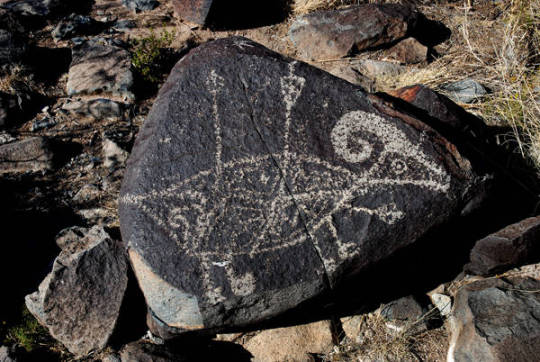
Animal Petroglyph
Petroglyph, Three Rivers Site, Mogollon, Bureau of Land Management, Otero County
Petroglyph of sheep with struck with arrows. Three Rivers Petroglyph Site was occupied by Mogollon people between 900AD to 1400AD. Now maintained by the Bureau of Land Management, Otero County, NM.
Hubbard Museum of the American West
New Mexico's Digital Collections
#petroglyphs#animal petroglyphs#sheep#mogollon#three rivers site#bureau of land management#hubbard museum of the american west#new mexico's digital collections
4 notes
·
View notes
Text
Horses originated in the Americas and their ancestors were thought to have disappeared 13,000 years ago. But there’s proof in soil samples collected in the tundra by the Cana Foundation that horses were still present up to 5,000 years ago. And the plants and animals that evolved alongside them benefited from their presence.

And there are tribes of indigenous people who have verbal histories of having horses before the Spanish brought their mounts to the Americas.
We’re already lost some breeds of horses forever, in our lifetime, like the beautiful and uniquely marked Abaco Barb.
Horses and donkeys are wanderers. They don’t rip up the roots of the grass they graze on, tear it with their hoofs like cloven hoofed ungulates, or stay in one spot and eat until it’s barren. They move. They nip off the grass tips. They dig for water, creating more water sources for rare species that can’t reach it. And, unlike cow manure, their manure is not toxic to the environment, or to people. Deer (gross fact warning!) pick through manure for seeds that haven’t been digested.
There are herd management strategies that, while they do impact the horses’ socialization some, it does not affect their health or their herd structure (darts that sterilize mares for a year or more). There are ways to manage wildlife without disrupting or destroying it forever. Cattle guards can keep horses off of main roads, and help roads drain.
Yet the Bureau of Land Management has removed thousands of horses from their herds, stuck them in pens on taxpayer dollars, branded and castrated them, left them with no room to run or shelter from the sun, and sold many to slaughterhouse kill buyers. I just recently found out that the Steens Mountain wild horses of Oregon are killed if they have blue eyes, and a double dilute cream gene, like Cremellos and Smokey Creams just because of an outdated superstition that blue eyes are more prone to eye diseases and blindness (fact: they are not, and the BLM has been senselessly murdering healthy, adoptable animals that might have been More desirable because of their unique coat colors! Also, blindness does not mean the animal is suffering or incapable of adapting to its environment! Look at Endo, the eyeless Appaloosa who has the Guinness World Record for championships won by a blind horse!)
The BLM has also considered brutally sterilizing mares by (trigger warning!!) ripping out their ovaries with an invasive wand and leaving them fend for themselves. A surgery that would be dangerous and super painful for a domestic horse to recover from, let alone a creature that is naturally afraid of predators like humans and is ripped away from her family in a strange environment. Stress contributes to mortality. Horses die in roundups every year.
End of trigger warning.]]
If you want more information, visit SkyDogSanctuary online, or The Cloud Foundation, or any number of rescues, and wild horse photographers who have been documenting herds for decades. They will tell you what the news will not.
I’m just sharing these graphics because I thought they were pretty and fascinating. I am not an expert. Nor have I allowed myself to read much because I have seen more than enough grisly

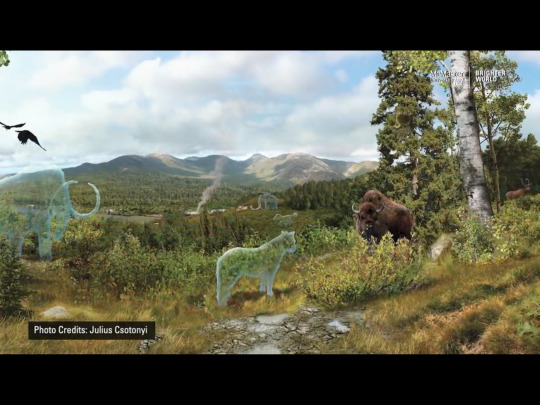
#horse history#bureau of land management#mismanagement of wild equines#tw surgery and death mention. Political article linked#rant#too angry to look up sources right now#Sky Dog is the source of the information about blue eyes horses being killed#the Cloud Foundation was the source about cruel mare sterilization
3 notes
·
View notes
Text
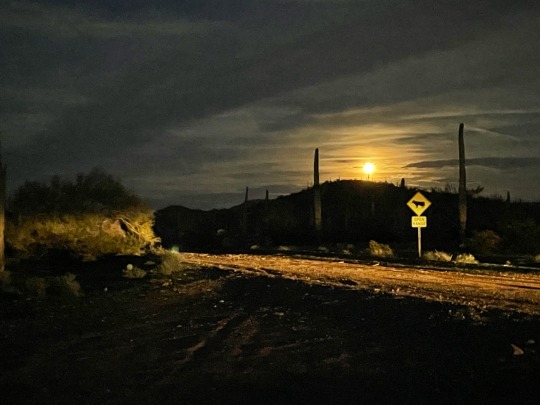
BLM area near Red Rock, Arizona
#moonrise#worm moon#arizona#bureau of land management#nature#landscape photography#greys#yellows#road signs#American southwest#mine
2 notes
·
View notes
Link
Excerpt from this press release from the Department of the Interior:
At a signing ceremony on Saturday, the Bureau of Land Management, the U.S. Forest Service, and the five Tribes of the Bears Ears Commission formalized and celebrated their partnership for co-management of the Bears Ears National Monument.
After signing the cooperative agreement formally recognizing their strong working relationship, the parties travelled to Highway 261 to unveil the Bears Ears National Monument sign(link is external), which includes insignias of the Hopi Tribe, Navajo Nation, Ute Mountain Ute Tribe, Ute Indian Tribe of the Uintah and Ouray Reservation, and the Pueblo of Zuni.
“Today, instead of being removed from a landscape to make way for a public park, we are being invited back to our ancestral homelands to help repair them and plan for a resilient future. We are being asked to apply our traditional knowledge to both the natural and human-caused ecological challenges, drought, erosion, visitation, etc.,” said Bears Ears Commission Co-Chair and Lieutenant Governor of Zuni Pueblo Carleton Bowekaty. “What can be a better avenue of restorative justice than giving Tribes the opportunity to participate in the management of lands their ancestors were removed from?”
To support the work that the five Tribes will perform under this agreement and through their representatives on the Bears Ears Commission, the BLM and U.S. Forest Service also announced that they will provide resources to each Tribe through a separate process.
On October 8, 2021, President Biden issued Proclamation 10285, which restored the Bears Ears National Monument, and recognized the importance of knowledge of Tribal Nations in managing the monument by re-constituting the Bears Ears Commission as established by President Obama in 2016, consisting of one elected officer each from the five Tribes. The BLM and the U.S. Forest Service jointly manage the monument and will prepare a management plan for federal lands within the 1.36 million-acre boundaries of the Bears Ears National Monument working cooperatively with the Tribal members of the Bears Ears Commission to protect and restore the monument objects and values.
#Bears Ears National Monument#Bureau of Land Management#BLM#US Forest Service#Native American tribes#Bears Ears Commission
74 notes
·
View notes